Design leaders face a pivotal moment. As artificial intelligence reshapes creative processes, platforms evolve at unprecedented speed, and businesses seek more profound competitive advantages, the mandate for design leadership has fundamentally expanded. What was once about craft excellence and product impact now demands enterprise-wide transformation and strategic influence.
Yet, with expanded influence comes increased complexity. Today's design executives must simultaneously:
- Drive business transformation while preserving creative excellence
- Scale impact across portfolios while maintaining quality and consistency
- Navigate emerging technologies while focusing on human needs
- Build organizational capability while delivering immediate results
- Create measurable business value while pursuing breakthrough innovation
Success in this environment requires new frameworks for thinking and action. The questions that follow serve as a strategic compass for design executives navigating these challenges. Developed through observation of leading design organizations, they target the core dimensions that distinguish high-performing design leadership: vision that drives transformation, systems that enable scale, teams that deliver excellence, and innovation that creates lasting value.
These are not questions to answer once and move on. They are tools for continuous reflection and strategic clarity - helping design leaders maintain focus on what matters most while building the foundations for lasting impact.
Direction-Setting: Drive Design-Led Transformation
Vision & Strategy
- Do we have a compelling vision for how design will transform our business beyond improving products?
- Have we clearly articulated how design drives core business metrics and enables future growth?
- Are we making bold bets that position design as a strategic driver rather than just a service function?
- Have we redefined what unique value design brings in an AI-augmented world?
- Are we positioned to shape business strategy, not just respond to it?
Innovation Direction
- Are we leading breakthrough innovation initiatives that could fundamentally transform the customer experience?
- Have we identified clear opportunities where design can create competitive advantages that are difficult to replicate?
- Are we effectively balancing short-term execution with long-term transformation?
- Are we driving innovation in business models, not just user experiences?
- Have we identified opportunities where design + AI can create exponential value?
Resource Allocation
- Are we investing our design resources in the highest-impact opportunities across the company?
- Have we identified and secured resources for strategic capabilities we need to build for future success?
- Are we systematically reallocating resources from lower to higher-value design initiatives?
- Have we created clear mechanisms to scale design impact without linear headcount growth?
- Are we investing ahead of emerging competitive threats and opportunities?
Organizational Alignment: Scale Design Impact
Organizational Design
- Does our organization structure enable both consistent execution and rapid innovation?
- Are we building mechanisms to scale design thinking across the enterprise?
- Have we structured for agile learning and adaptation versus traditional workflows?
- Does our organization enable both strategic influence and operational excellence?
Talent & Capabilities
- Are our most critical design roles filled with exceptional talent who can drive strategic impact?
- Are we developing leaders who can drive enterprise transformation through design?
- Have we redefined career paths for an AI-augmented design world?
- Are we building the commercial and strategic acumen our future requires?
- Have we identified and developed new capabilities needed for strategic impact and future success (e.g., AI integration)?
Design System Evolution
- Is our design system evolving from a component library to a true strategic asset?
- Are we building infrastructure that creates network effects across products?
- Have we established frameworks for maintaining quality in an era of infinite variation and rapid generation?
- Are we effectively balancing standardization with AI-enabled personalization?
Leadership Mobilization: Build Strategic Influence
Senior Team Evolution
- Have I built a senior leadership team that balances design excellence, business acumen, and strategic thinking?
- Does my team reflect the diversity of perspectives needed across customer experience, systems thinking, and technological innovation?
- How have I developed my leaders from execution-focused managers to strategic partners who can influence at the enterprise level?
- Is our design leadership team equipped to shape business strategy?
- Have we developed the judgment to lead in an AI-augmented world?
Team Dynamics & Decision-Making
- Does our leadership team operate as a cohesive unit focused on enterprise-wide impact rather than just portfolio-specific wins?
- Are we having the right strategic conversations that elevate beyond craft and into business transformation?
- Are we making decisions at the pace our technology enables?
- Have we created mechanisms for cross-functional strategic influence?
- Is our team equipped to shift from production excellence to strategic judgment?
- Have we established clear principles for when to preserve human craft versus leverage AI capabilities?
Operating Rhythm
- Have we established a cadence that balances strategic thinking with rapid execution?
- Are our leadership forums and rhythms driving substantive strategic discussions versus status updates?
- Have we evolved our rituals to focus on strategic impact versus production?
- Are our review processes suited to AI-accelerated workflows?
- Do we have the right forums for influencing enterprise direction?
Cross-Organization Leadership
- Has my senior team built the right relationships and influence with cross-functional leaders?
- Are we effectively bridging between design excellence and business impact in our leadership approach?
- How are we developing the next generation of strategic design leaders?
Innovation Excellence: Drive Breakthrough Impact
Customer-Centered Innovation
- Are we identifying opportunities that transform customer relationships?
- Have we created effective mechanisms to translate customer insights into innovation?
- Are we effectively balancing user needs with business objectives?
- Do we have frameworks for innovation that leverage both human and machine capabilities?
Technology Integration
- Are we effectively integrating emerging technologies into our design processes?
- Have we established clear frameworks for evaluating and adopting new design tools?
- Are we maintaining design excellence while leveraging automation and acceleration?
- Have we defined clear principles for human-AI collaboration in design?
- Have we built infrastructure that scales our strategic advantages?
- Are we effectively balancing automation with human judgment?
Measurement & Impact
- Have we established new metrics for design's strategic impact?
- Are we measuring value creation beyond traditional design metrics?
- Do we have clear frameworks for evaluating AI-augmented design quality?
- Have we created mechanisms to demonstrate design's enterprise value?
Personal Effectiveness: Lead with Vision and Craft
Time & Focus
- Am I spending enough time on strategic priorities versus operational details?
- Have I created effective delegation mechanisms for routine decisions?
- Are my priorities aligned with where design creates most enterprise value?
- Have I found the right balance between vision setting and execution oversight?
- Am I maintaining sufficient bandwidth for future-focused thinking and innovation?
- Have I redefined what "craft mastery" means for my own role in an AI era?
Leadership Model
- Am I effectively balancing creative leadership with business acumen?
- Have I built strong relationships with key stakeholders across the organization?
- Am I role-modeling the design thinking and innovation mindset we need?
- Have I evolved my leadership style to drive enterprise transformation?
- Do I demonstrate comfort with ambiguity and rapid change?
Growth & Development
- Am I continuously expanding my strategic and business leadership capabilities?
- Have I built a strong network of peers and mentors for perspective and growth?
- Am I effectively developing the next generation of design leaders?
- Am I developing the business and strategic acumen our future requires?
- Do I have effective mechanisms for continuous learning and adaptation?
Personal Impact
- Have I positioned myself as a strategic leader beyond design?
- Am I influencing at the right level of the organization?
- Do I have the right metrics for my own effectiveness?
- Am I creating space for others to grow into strategic roles?
Implementation Guide
The value of these questions lies not in their occasional review but in their systematic application to design leadership practice. Here's how to use them effectively:
Regular Self-Assessment
Design leadership requires ongoing reflection and adjustment. Schedule quarterly deep-dives into these questions, ideally coinciding with your organization's planning and review cycles. Block focused time — at least two hours — to honestly assess your answers and their implications.
During these reviews, look for patterns rather than just individual answers. Which areas consistently need attention? Where do you see the same challenges recurring? These patterns often reveal systemic issues that require structural solutions rather than tactical fixes.
Document your reflections and revisit them over time. This creates a valuable record of your strategic thinking and helps identify both progress and persistent challenges. Pay particular attention to areas where your assessment has shifted significantly — these often indicate important changes in your organization's context or needs.
Team Development
These questions serve as powerful tools for developing your broader design leadership team. Use them to structure development conversations and guide capability building across your organization.
In one-on-one sessions with direct reports, select relevant questions to explore together. This helps senior design leaders understand how their work connects to larger strategic objectives. It also provides a framework for discussing their growth and development needs.
For team sessions, choose specific sections that align with current challenges or opportunities. For example, use the Innovation Excellence questions to guide a leadership offsite focused on scaling innovation practices, or explore the Organizational Alignment section when working on design systems strategy.
The questions can also help identify gaps in your team's collective capabilities. Where do you see hesitation or uncertainty in the answers? These areas often highlight the need for targeted development or new expertise.
Strategic Planning
Embed these questions into your formal planning processes. They help bridge the gap between high-level strategy and practical execution by forcing consideration of key enablers and dependencies.
During annual planning, use them to test the completeness of your strategic thinking. Do your plans adequately address each dimension? Have you accounted for the organizational capabilities needed to execute successfully?
In quarterly reviews, select relevant questions to structure the discussion. This helps maintain focus on strategic issues rather than getting lost in tactical details. It also provides consistency in how you evaluate progress and make adjustments.
Share appropriate questions with cross-functional partners to guide strategic discussions. This helps establish shared language and frameworks for thinking about design's role in driving business value.
Success Indicators
While the questions themselves are qualitative, look for quantitative indicators that show progress in each area:
- Strategic Impact
- Design representation in key decision forums
- Business metrics influenced by design initiatives
- Executive stakeholder engagement scores
- Operational Excellence
- Design system adoption rates
- Speed to market improvements
- Quality metrics across the portfolios
- Team Performance
- Leadership pipeline strength
- Team engagement scores
- Retention of key talent
- Innovation Outcomes
- Success rate of new initiatives
- User adoption of new features
- Revenue from design-led innovation
Moving Forward
The role of design leadership continues to expand and evolve. These questions provide a framework for navigating this evolution with intention and strategic clarity. They help design executives maintain focus on what matters most: building teams that can execute with a high bar, creating systems that enable scale, and driving innovation that delivers lasting value.
Use these questions not as a checklist to complete, but as prompts for deeper strategic thinking. Let them guide regular reflection on your organization's direction and capabilities. Share them with your leadership team to spark meaningful dialogue about priorities and possibilities. Most importantly, adapt them to your specific context and challenges.
Remember that the goal isn't perfect answers but better questions — ones that promote strategic thinking, reveal hidden opportunities, and drive meaningful progress in building design's influence and impact across the organization.
The future of design leadership will be defined by those who can consistently connect creative excellence with business impact, while building the organizational capabilities needed for sustained success. These questions can help light the way forward.



